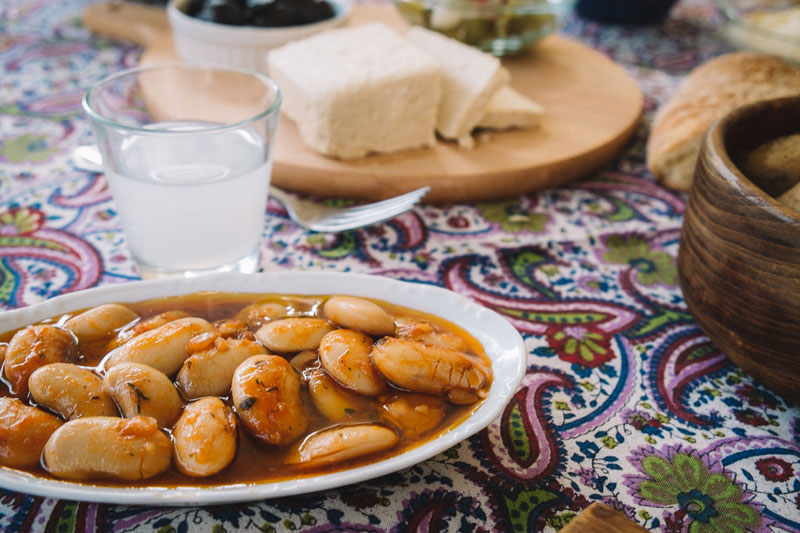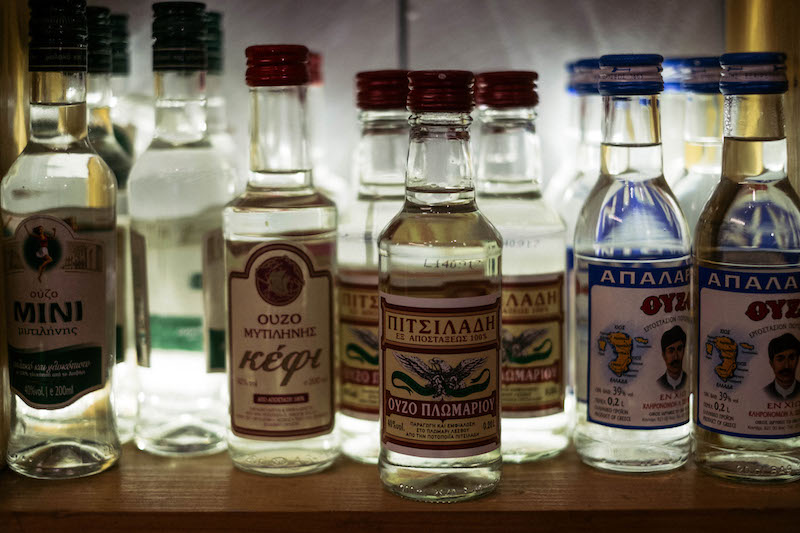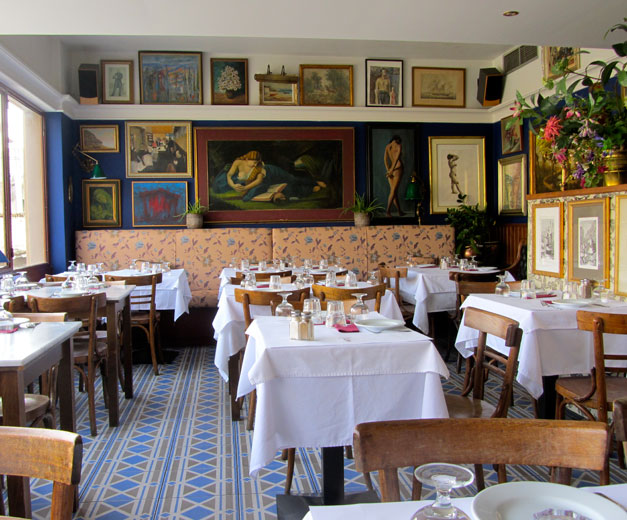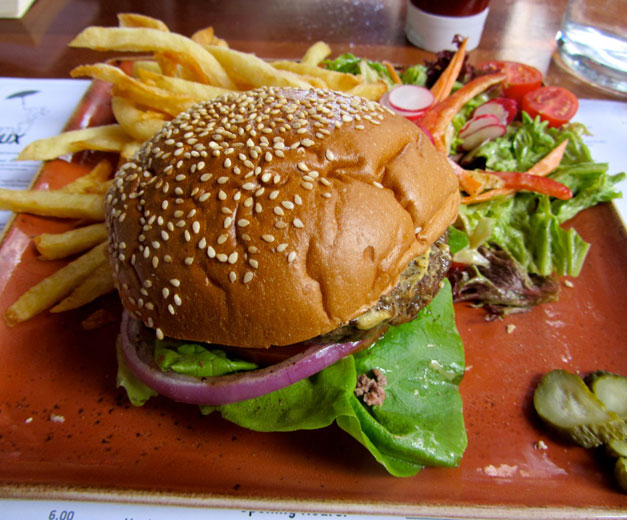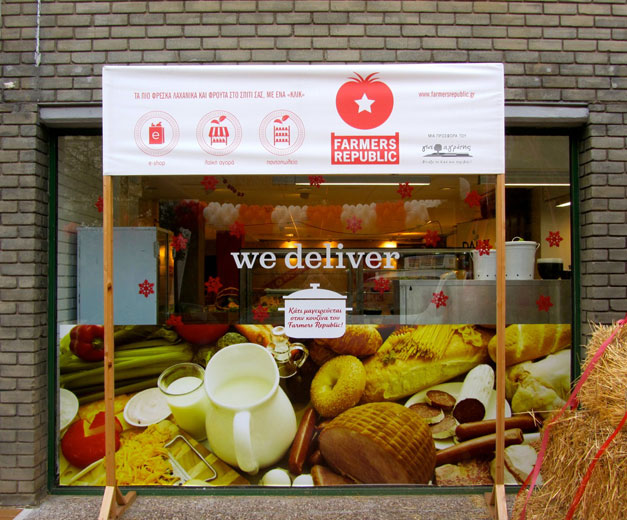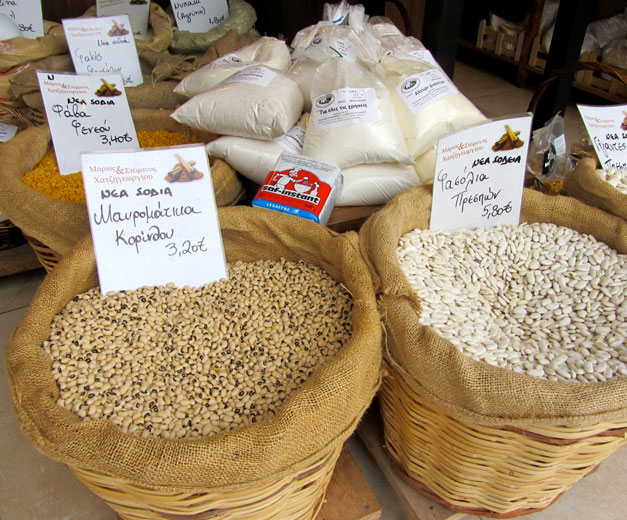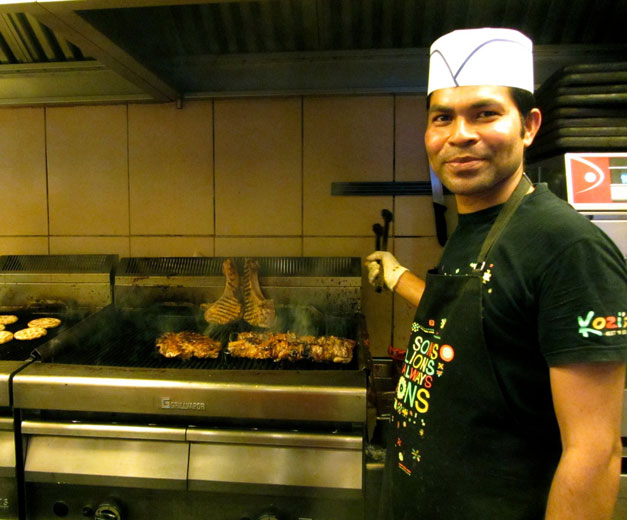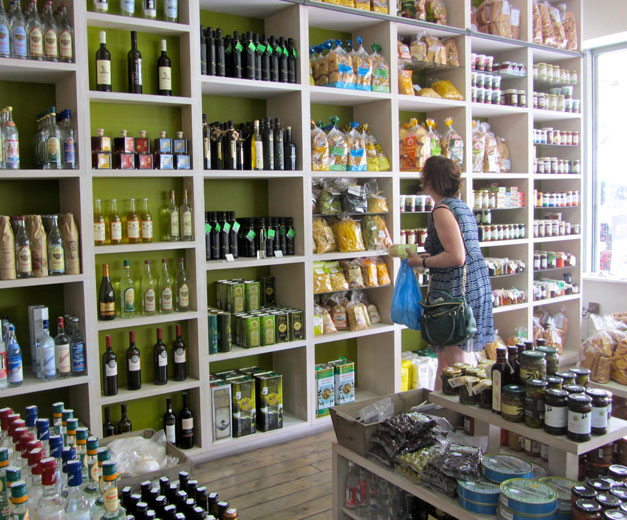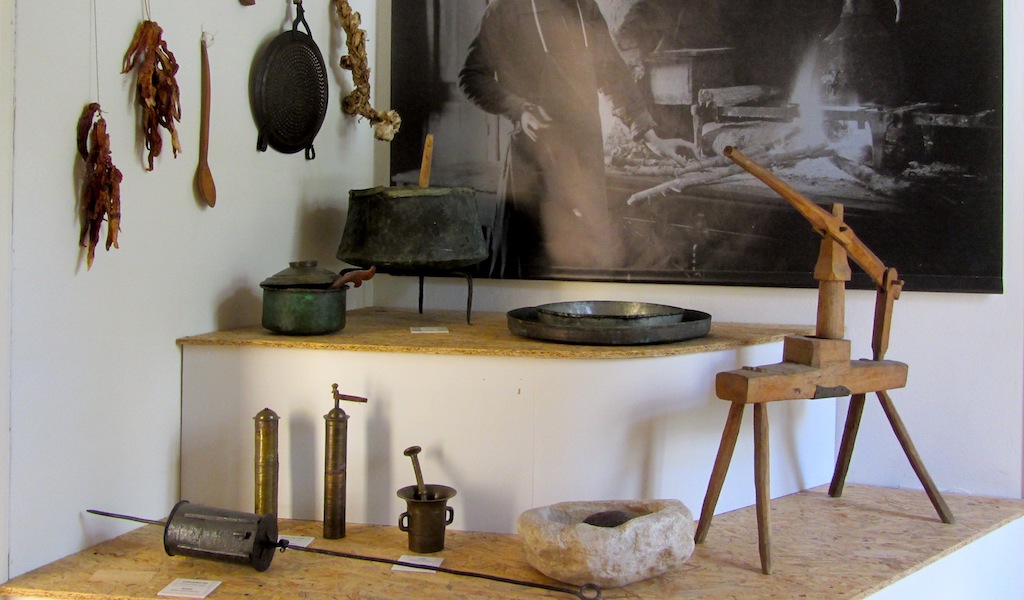We can't find the internet
Attempting to reconnect
Something went wrong!
Hang in there while we get back on track
Search results for "Diana Farr Louis"
Athens
Building Blocks: Figs, Greece’s Ancient Superfood
Whoever came up with the expression “I don’t give a fig” had obviously never tasted a Greek fig fresh off the tree. How figs, almost certainly dried, came to be considered common and worthless in late medieval England is a mystery, but for the Greeks, they have always been something to treasure and preserve, to be enjoyed in all seasons. As the Bible tells us, figs have been around since the very beginning. After taking bites out of the forbidden fruit, possibly an apple, Adam and Eve suddenly acquired the knowledge that they were naked and covered themselves with the leaves of the fig tree.
Read moreAthens
Nomsy Kebab Artisans: Stylish Souvlaki
Souvlaki might just be Greece’s most popular food. Meat cooked on a stick, wrapped in a pita, dressed with sliced tomato and onion and a dollop of tzatziki, it can be eaten on the run – and it’s often the first thing visitors run to eat as soon as they arrive in this country. It’s an enduring favorite for Greeks, too. Not only is it delicious, but the standard kebab* is also inexpensive, costing around just 3 to 4 euros. The challenge, then, is to find kebabs and gyros that are more imaginative, still juicy and delicious, with a wider range of fillings and toppings, perhaps even vegetarian and vegan options – and which are still moderately priced.
Read moreAthens
Porphyra: Classic Simplicity
In ancient times, the murex shell, “porphyra” in Greek, was the source of a beautiful dye so rare and costly to produce that it was only used for royalty – the royal purple. Three years ago, in Athens’ northern suburb of Melissia, a restaurant calling itself Porphyra opened, preparing high-quality seafood with a creative yet accessible flair – no foam or unrecognizable frills. We have yet to taste a dish there that was less than scrumptious and because we have been following the career of owner, Christos Cjoncari, for 20 years now, we wanted to find out how he does it. When we first met, he was in his late teens, a waiter at Kali Parea, a popular fish place in Nea Erythraia.
Read moreAthens
Building Blocks: The Sweet Science of Making Greek Honey
Editor's note: Our recurring feature, Building Blocks, focuses on foods and ingredients that are fundamental to the cuisines we write about. This may come as a surprise, but little Greece is Europe’s fourth most important honey producer after Spain, Germany and Hungary. Every year, between 12,000 and 17,000 tons of this liquid gold are stolen from the country’s roughly 1.5 million hives and poured into jars to satisfy the local desire for honey. And it seems Greeks can’t get enough of it. They rank high among the world’s consumers, slurping up 1.7 kg per person every year as they use it to sweeten tea, drizzle over yogurt, slather on toast and soak baklava and other desserts. By contrast, the average American ingests a mere 400 grams.
Read moreAthens
Cookos: New Tricks for an Old Taverna
Much as we may love the kitchen, and while the lockdown has given us plenty of time to experiment with old and new recipes, there does come a moment when the cook needs a meal off. Whether it’s because you have neglected to shop, have run out of inspiration or simply hanker for a dish prepared by someone else, being able to order from a place that has something more exciting than pizza, souvlaki, hamburgers and crepes is a very welcome treat. Some tavernas have come to the rescue, offering takeout from their regular menus, but the owners of a landmark Kifissia taverna have taken that option one step further and opened a special shop catering to takeout and deliveries. Cookos – the name is a play on the words “cook” and “kos,” the abbreviation for Kyrios or Mister – opened on December 15, 2020.
Read moreAthens
The Old Bicycle: Funky Ride
It was a frosty dark night just before the solstice and as we walked the 10 or so minutes from the Keramikos Metro to our destination, we passed familiar favorites like A Little Taste of Home and places as yet unvisited that seemed alluring. But when we ventured further into the unknown, the street was empty both of pedestrians and lit storefronts. Where was this restaurant? A few blocks more brought us back to terra cognita. The Old Bicycle (To Palio Podilato), its window bright and with a bicycle hanging inside, turned out to be practically next door to the Benaki Museum’s Pireos Street annex, one of the city’s most exciting museums for modern art, photography and foreign exhibitions.
Read moreAthens
The Spot: World Kitchen
What do shakshuka, kibbeh, nachos, hummus, crepes and a turkey club sandwich have in common? They are all on the menu of The Spot, a charming comfort-food/tapas bar with a global pedigree that opened in October not far from the pedestrianized road that circles the Acropolis. And they are there because they are all personal favorites of the owners, Turkish-born Aysegul Ozden Trifyllis and her Greek husband Yiannis Trifyllis. “We don’t want to fit into a niche,” Aysegul told us when we visited one balmy day in early November. “That’s why we didn’t make our food just Turkish or Greek.”
Read moreAthens
Avli: Funky House of Meatballs
Avli is one of those places you have to be introduced to by someone who’s already been there. Although a sign does exist above its narrow metal door, there’s so much graffiti on either side of it, you could walk right by even if you had the address firmly in your hand or mind. Once inside, if you’re the first customer, you still might think you’ve made a mistake. Avli means “courtyard,” but this one is narrow, much more like a back alley. Blue doors and shuttered windows the same shade as the Greek flag pierce the right wall, the left has a few potted plants and three plump alley cats comfortably ensconced on the old-fashioned rush-seated taverna chairs.
Read moreAthens
Summer Picnics: Alfresco in Athens
Athens, unofficially known as the Big Olive, has many delightful spots for a picnic in all seasons. Okay, in summer perhaps you’d rather be on the beach – and that can be arranged if you hop on a bus or tram for the southern coastal suburbs of Voula, Vouliagmeni and Varkiza – but in the city proper you can spread your meal on a hillside with a view of the Acropolis. With the weather often sunny and mild even in February, all you need is a little DIY initiative and the ability to resist the temptation of a snack at one of the many “fastfoodadika” or a sit-down meal in an air-conditioned taverna.
Read moreAthens
Market Watch: Rendis, Athens’ Wholesale Market, Goes Retail
Speed down the National Road till you’re in sight of Rendis Market, then follow the trucks off the highway and into a vast depot of concrete sheds. Though the trucks are there to pick up and deliver fruits and veg from all over Greece to supermarkets, grocers’ and farmers’ markets, we pulled over and started shop-hopping. Rendis, an industrial district of small factories, warehouses and train yards on the west side of Athens, has never been an area one would go for pleasure.
Read moreAthens
Volta: Taking a Turn in Petralona
“We want to show people what Greek cuisine is really like. It’s not just souvlaki, gyros and moussaka. So in July and August when we’re closed, we travel all over the country looking for recipes, and because we love Greek wines too, we find recipes that go with them,” Xenophon says. We took a long time studying the menu – nibbling on their own olive bread – because even the dishes that sound familiar are not always what they appear to be. Take, for example, spanakopita (spinach pie). Here, it’s actually a salad. Moreover, their cheese dip, myttotos, made of three white cheeses plus black garlic, “goes back to the time of Hippocrates,” and the liver with apples, a combination we’ve never heard of, is a recipe from Karditsa in the northern Greek region of Thessaly.
Read moreAthens
Building Blocks: Feta, Greece’s Big Cheese
Feta must be one of the world’s oldest cheeses, it’s certainly one of the most famous, and it’s practically never missing from a Greek table, no matter the time of day. A person might grab a chunk of this chalk-white substance for breakfast, crunch through layers of feta-stuffed phyllo for elevenses, put a slab of it on her village salad for lunch, have it for supper along with a vegetable casserole and then pair it with watermelon for a scrumptious dessert. The only other food that a Greek may be even more addicted to is bread. If you were to guess which nation boasted the most cheese eaters on the planet, surely you would say France, home to so many delectable and sophisticated fromages.
Read moreAthens
Building Blocks: Trahana, The Ancient Instant Soup
You might not have heard of trahana, sometimes called rustic pasta, if you don’t possess a Greek grandmother. This humble food rarely turns up in tavernas, yet it is a staple, especially in the winter months, and the basis of many a comforting meal. In fact, it may just be the world’s first instant soup. Trahana, which is most often seen in small couscous-like pellets, represents a synthesis of wheat and dairy, making it more nutritious and tastier than ordinary pasta. Its flavor and consistency depend on whether the flour, semolina or cracked wheat is kneaded with milk, soured or fresh, or yogurt. Traditionally, the mixture would be shaped into balls or patties, dried in the sun until hard, grated into tiny granules, dried some more, and then stored in cloth bags, where it would keep for months, even years.
Read moreAthens
Sam Has The Wrong Boyfriend: An Affair To Remember
Surely this is one of the most outlandish names for a restaurant anywhere. When we first heard it, we couldn’t believe our ears. First of all, Sam isn’t even a Greek name. But “informed sources” promised superlative food and a pleasant atmosphere so off we trotted, happy to be heading for the beguiling district between Keramikos and Metaxourgio, where no one had any reason to venture not even a decade ago. The first thing that struck us that dark night in mid-December were the small festive lights entwined around the restaurant’s windows, but immediately afterwards we found ourselves smiling at the graphics. Inside and out, the signs, the lettering, the images – of a girl with braids sitting on a swing, arms behind her back, unfussy, line drawings in black and white – charmed us. The clock on one wall with the letters LOVE at the cardinal points added one perfect touch.
Read moreAthens
Raising the Bar: A Chocolate Renaissance in Athens
Athens supermarkets devote many shelves to Greek chocolate bars, and there is no shortage of shops in the city that produce their own chocolates with different fillings as well as truffles, along with other types of sweets. But the past year has seen a chocolate renaissance of sorts: two shops opened which are dedicated exclusively to chocolate, joining a third, The Dark Side of Chocolate, an old-timer from 2011. What’s fascinating is that the owners are all young people in love with this magical, demanding substance, yet their creations could not be more different.
Read moreAthens
Ouzeri Tou Laki: Landlocked Seaside Oasis
Surely Plateia Viktorias is one of the last places you’d look if you wanted to find a typical seaside taverna. The square, once a meeting place for Patission Avenue’s haute bourgeoisie in the first half of the 20th century, was filled with refugee tents and sleeping bags just a few years ago. Today it still boasts the city’s largest concentration of refugee help centers, and women with head scarves push prams through it, while Syrian and Afghan lads lounge on its ledges playing with their cell phones. We first noticed the eatery, at the very end of a two-block pedestrianized street called Hope (Elpidos), while on our way to lunch at the Victoria Art Project, an initiative born during last summer’s Documenta 14 art festival to foster creativity in the neighborhood.
Read moreAthens
Kapnikarea: Home of the (Greek) Blues
Kapnikarea, a tiny music café-restaurant, takes its name from the Byzantine church nearby in the middle of Ermou Street. The street, dedicated to Hermes – a god of many attributes, including trade, thievery and smooth talking – and thronged with tourists and shoppers day and night, is an unlikely location for this unusual eatery. You might expect it in neighborhoods like Psyrri or Exarchia, where the eccentric is commonplace, but not opposite H&M and in the same zone as Zara and Marks & Spencer. In all fairness, Kapnikarea was there first. And when it opened in 1977, it was an avant-garde sandwich shop, a pioneer in the land of souvlaki and spanakopita. This version of fast food barely existed back then although it caught on fast. Nineteen years later, Dimitris Sofos took over the shop from his father and completely transformed it.
Read moreAthens
Less Is More: Celebrating Lent in Greece
From Rio to Venice, from Cologne to New Orleans and from Patras to towns all over Greece, Catholics and Orthodox (along with believers and nonbelievers of every description) celebrate Carnival – the three weeks preceding Lent – with parades, masquerades, pranks, Dionysian revels and Lucullan feasts focusing on roasted meats. After all, the word “carnival” is thought to have come from the Italian carne levare or “abstain from meat” – which is also the meaning of the Greek Apokreas – and heralded a time when many religions prohibited consuming flesh during the sacred fast before Easter.
Read moreAthens
Well Oiled: On the Hunt for Laderá Stews
It has been said that when Greeks want a good meal, they stay at home, and that when they go out, having fun is the object, the food a secondary concern. But that was in the past. As diners have become more sophisticated and demanding, restaurants’ and tavernas’ standards have been rising and a mediocre meal is hard to find. But the craving for home cooking, for those laborious, slow-simmered soups, stews, and casseroles that mothers and grandmothers used to devote their days to creating still persists. And the old-fashioned mageirio or mageriko is an institution that satisfies this urge.
Read moreAthens
Best Bites 2017: Athens
As we think back over the truly delicious meals we enjoyed this year in and around Athens, it appears to us that the food scene here is going from strength to strength, despite the continuing prolonged recession. And most of these memorable feasts focused on procuring the finest local ingredients and employing them in traditional Greek or Mediterranean recipes in imaginative but not surreal or outlandish ways. Below are some of our Athens correspondents’ favorite memories from the last year of places and meals that reflected this encouraging trend. A Little Taste of Home: The overall excellence makes it difficult to choose just three places, but I have absolutely no difficulty in singling out the best bite of all.
Read moreAthens
Piperiá: Delightfully Unchanged
Change may be inevitable but it’s the last thing we want in a restaurant we cherish. We were reminded of this a few months back when by chance we were taken out to dinner at Piperiá in the Neo Psychiko neighborhood by friends who live nearby. It had been five years since we last visited the place and we were very happy to find that little had changed in the interim. What a joy it was to find the same welcoming smiles and friendly young faces; excellent but not oversolicitous service; some items on the menu that we could never resist ordering; and some new tastes that rivaled the familiar treats.
Read moreAthens
Harvest Week: An Olive Grove of One’s Own
Late October marks the start of the olive picking season throughout Greece. From Thrace to Crete, from Corfu to Lesvos, and even in the suburbs of Athens, landowners lucky enough to have olive trees will start harvesting their fruit. And the harvest may continue for another six months. On Crete, for example, where neat rows of low trees cover vast areas, civil servants are given leave to collect their olives in January and February. On Corfu, on the other hand, where the giant trees are too tall for easy harvesting, the common practice is to spread black nets underneath them and wait for the fruit to drop. They collect it once a month until late spring.
Read moreAthens
43 Sarantatrio: A Whole New World
This funky restaurant’s name was inspired by its address, on one of the main streets in the Athens district known as Neos Kosmos, or New World. It could just as well be called Terra Incognita, so distant is it from the usual areas frequented by locals and foreigners alike for entertainment and good food. And yet, geographically, it’s just a short walk from a new institution that has already claimed its rightful place among the “must sees” of the Big Olive: the National Museum of Contemporary Art.
Read moreAthens
Hohlidaki: Multiple (Culinary) Personalities
When we first discovered this delightful ouzeri in Neo Psychiko last May, we were thrilled to have found a place that specialized in Politiki Kouzina – not the cooking up of politics but the cuisine of Constantinople, often called simply I Poli, or The City, by Greeks even today. Ironically, mutual friends had chosen it to fete a Turkish guest, a visitor from Istanbul, which seemed a culinary version of taking coals to Newcastle. But she pronounced the fare delicious, and smacked her lips over such shared dishes as Imam Baildi, dolmades and bourekakia made with phyllo.
Read moreAthens
A Little Taste of Home: Edible Nostalgia
Have you ever met a restaurant owner who has been a house painter, real estate agent, rug dealer, bread deliverer, camel trainer and interpreter as well as running a tourism business? Meet Ahmad Alssaleh from Palmyra, Syria. Although he is only 31 and the youngest of ten children, he is not only unstoppable, he is about to celebrate the first anniversary of one of the most imaginative and best restaurants we have ever been to anywhere – not just Athens. But we’ll get to the food later. His story will whet your appetite, as it did ours. It all started back in 2009 when Alssaleh met Magda, a Greek girl who’d gone to Syria as a tourist.
Read moreAthens
Best Bites 2016: Athens (and Beyond)
With shops closing, pensions and salaries shrinking, and more and more Greeks feeling the pinch, it never ceases to amaze us that good food in the capital and elsewhere is still appreciated and faithful customers still abound. The restaurants below are just a few among the many wonderful, lively places that are managing to keep their standards despite enormous financial pressures. Their prices are affordable, their quality outstanding. Sea Satin Nino, Korthi Bay, Andros This is one of those restaurants that a Michelin Guide would rate not merely as “worth the trip” but “worth the detour.” Although it may take an hour’s drive from the port and half an hour from Hora, any meal at Sea Satin Nino is cause for celebration.
Read moreAthens
Building Blocks: Avgolemono, Greece's Sauce for All Seasons
Is there a flavor more typically Greek than avgolemono, the smooth yet tart sauce that enriches dishes on virtually every restaurant menu in this country (apart from the souvlaki joint)? You’ll find it livening up soups of every description, poured over dolmades (wraps) of cabbage, vine leaves or chard and stuffed zucchini, thickening dozens of fish, meat, poultry and vegetable stews and fricassees. It marries particularly well with artichokes, in a famous delicate dish called anginares ala polita (or Constantinople-style), and binds the interesting innards in mageiritsa, the traditional fast-breaking stew-like soup eaten on Easter eve.
Read moreAthens
Building Blocks: Feta, Greece's Big Cheese
It must be one of the world’s oldest cheeses, it’s certainly one of the most famous, and it’s practically never missing from a Greek table, no matter the time of day. A person might grab a chunk of this chalk-white substance for breakfast, crunch through layers of feta-stuffed phyllo for elevenses, put a slab of it on her village salad for lunch, have it for supper along with a vegetable casserole and then pair it with watermelon for a scrumptious dessert. The only other food that a Greek may be even more addicted to is bread. If you were to guess which nation boasted the most cheese eaters on the planet, surely you would say France, home to so many delectable and sophisticated fromages.
Read moreAthens
Building Blocks: The Athens School of Phyllology
Editor's note: Our recurring feature, Building Blocks, focuses on foods and ingredients that are fundamental to the cuisines we write about. Here we look at phyllo, an essential element of the Greek kitchen that tastes best when made by hand. It is thin, fragile, difficult to roll out and fiddly to work with – at least to the uninitiated – and yet phyllo is one of the pillars of the Greek kitchen. This delicate pastry is almost as ubiquitous as bread, turning up in the form of scores of sweet and savory pies with myriad fillings and dozens of shapes that vary depending on what part of Greece you’re in or even whose home you may be visiting. The phyllo-based pita, or pie, is the most versatile of foods: It can be served hot or cold; as a starter, a main course or dessert; eaten on the run or sitting down; lifted out of the frozen food section or made at home.
Read moreAthens
CB on the Road: A Food Lover's Guide to Andros
Some islands, Mykonos and Santorini for example, are known for their temples of gastronomy. Others, like Tinos, Milos, Syros and Sifnos, possess solid reputations for uniformly excellent tavernas. Until recently, Andros, a green anomaly in the treeless, windswept Cycladic chain, had two main attractions for tourists: a world-class modern art museum and a network of well-maintained hiking trails. You could get a decent meal after you’d seen the exhibition in Hora or trekked up to a 1,000-year-old monastery or down a river lined with water mills, but it wouldn’t be something to write home or tweet about.
Read moreAthens
Weathering the Storm: Athens Eateries in a Time of Crisis
With the banks closed for almost two weeks and Greece’s position in the eurozone the subject of heated debate and endless negotiations for the past several months, we wondered how some of our favorite restaurants were coping. Greeks had voted NO to austerity the previous Sunday (July 5), but did this mean they were spending their spare cash on staples for harder times and going out only to take part in demonstrations or stand in ATM queues?
Read moreAthens
Bakalogatos: Grocery Cat
Whether you’re a native Athenian or just visiting, Kypseli is not likely to be on your list of favorite haunts unless you happen to have roots there. It’s not connected to the Metro, it boasts neither museums nor fancy boutiques, and yet it must be one of the liveliest districts in Athens. T
Read moreAthens
CB on the Road: Eating in Rafina
You don’t need the excuse of a ferry departure to head for the port of Rafina, on Attica’s east coast. Its long, open beach is a favorite among windsurfers, its fish stalls carry the catch from most of the central Aegean and, most important, it offers a handful of excellent eateries. But how can you separate the standouts from the run-of-the-mill?
Read moreAthens
Café Avissinia: Flea Market Find
Sooner or later almost everyone in Athens, tourist or local, heads for the flea market, the city’s oldest bazaar, below Monastiraki Square. Although it’s busiest on Sundays, all week long you can rummage through the antiques – furniture, bric-a-brac, mirrors, paintings, vintage toys, statuettes, vases, silverware – spread out in colorful disorder in front of the small shops that line all four sides of Avissinia Square.
Read moreAthens
Mama Roux: Athens Globetrotter
In Athens, apart from traditional or nouvelle Greek, you can find almost any kind of cuisine you crave, but usually not under one roof. Thanks to the influx of immigrants and diaspora Greeks in the past 20 years, the city’s roster of foreign restaurants is no longer confined to Italian, French and a sprinkling of swanky Asian and Indian places with white tablecloths.
Read moreAthens
Farmers Republic: A Revolutionary Marketplace
here’s a lot of talk about revolution in Greece these days. We have a new left-wing government that promises to shake up the establishment both here and abroad, cutting costs by drastically reducing ministerial perks like private guards and official automobiles, reinstating lost jobs and shorn pensions, upping the minimum wage … and seeking alternative ways of handling Greek debt. Our young PM and some of his closest associates are even flouting officialdom’s time-honored dress code by speaking in parliament, Brussels and Bonn without ties and with flapping shirttails.
Read moreAthens
Bean Week: Greece's National Treasure
If there is one single food family that shows off the breadth and extent of the collective Greek culinary imagination, it has to be the humble legume. Together with wheat, beans of all kinds, along with lentils, chickpeas and split peas, form the very foundation of the Greek diet and have done so since Neolithic times.
Read moreAthens
Kozi's: Out of Africa
It’s Friday, 5:30 p.m., an hour one usually associates with tea and biscuits, or in Greece a frappé, yet Kozi’s, a South African restaurant, is pleasantly abuzz with diners tucking into massive steaks and inch-thick burgers. As we stand by the counter waiting for the owner to appear and watching the meat sizzling on the grill, we can’t help smiling. The young woman near the till asks, “Why are you smiling?”
Read moreAthens
Sweet Beirut: Lebanon in Athens
Unless you know it’s there, you might miss this tiny shop hidden behind a bus stop on the outskirts of the northern Athenian suburb of Chalandri. Many Athens kiosks are twice, three times the size. But it’s certainly cozy, and once you’ve discovered it, you’ll keep going back, not just for the sweets – which would put a smile on the face of Scheherazade – but also for the spices, condiments, nuts, cardamom-perfumed coffee, arak and other hard-to-find Lebanese specialties, or maybe just to have a chat with the owner, Lina Tabbara.
Read moreAthens
The Fungus Among Us: Athens' Mushroom Boom
It’s October and mushroom season in many parts of Europe, but if you were hoping for anything like Genoa’s Porcini Festival in Athens, you’re out of luck. But don’t despair: ‘shrooms, wild and cultivated, can be found; it just takes a little sleuthing.
Read moreAthens
Peri Lesvou: From Lesbos with Love
Athinas is one of our favorite streets in the whole of Athens. Running from Omonia to Monastiraki squares, it has a scruffy, chaotic, disreputable charm that has hardly changed since we moved to Greece more than 40 years ago. From the Omonia side to City Hall and the Central Market, hawkers and peddlers – of everything from sunglasses and “magic” juicers to contraband cigarettes – make the sidewalk an obstacle course for the crowds of shoppers in search of bargains in open storefronts.
Read moreAthens
Gastronomy Museum: Edible Exhibits
In June of this year, a new museum joined the roster of cultural institutions in Athens and is the first dedicated to Greek gastronomy. There may be others where you’ll see ancient cooking pots and serving vessels or rustic farming implements and kitchen equipment from bygone eras, but they’ll only be a small part of a general archaeological or folkloric collection. And how often will eating and drinking be a key part of your experience?
Read more
















